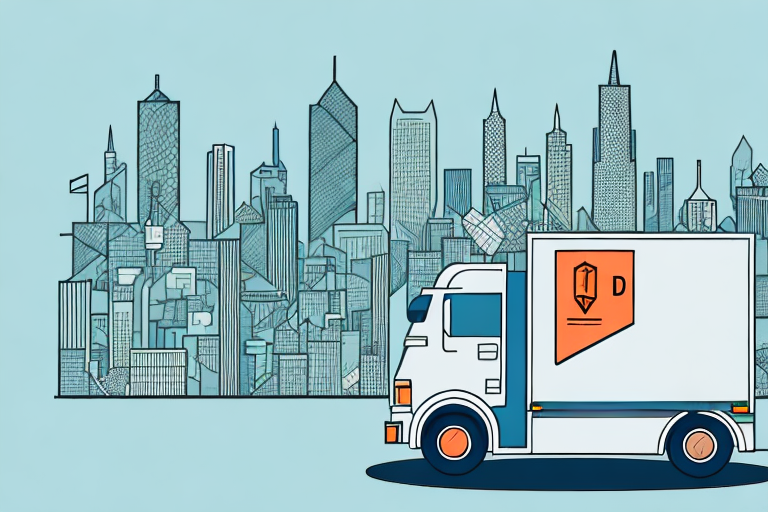Importance of Delivery Tracking Systems for E-commerce Businesses
Delivery tracking systems are indispensable for e-commerce businesses aiming to offer efficient, reliable, and transparent shipping experiences to their customers. These systems provide real-time updates on the status of shipments, from dispatch to delivery, significantly reducing the risk of lost packages and ensuring timely arrivals.
Real-time Updates for Enhanced Customer Service
With real-time tracking, businesses can proactively inform customers about the whereabouts of their orders. This transparency not only improves customer satisfaction but also reduces the volume of inquiries directed to customer service teams. According to a Statista report, effective communication through tracking systems can decrease customer service requests by up to 30%.
Reducing Lost Packages and Ensuring Timely Delivery
Advanced tracking systems minimize the chances of packages getting lost by providing precise location data throughout the delivery process. This ensures that any potential issues are identified and addressed promptly, leading to higher on-time delivery rates. Reliable delivery times are crucial for maintaining customer trust and encouraging repeat business.
Evolution and Advancements in Delivery Tracking Systems
From Manual to Automated Tracking Systems
Initially, delivery tracking relied heavily on manual data entry, which was prone to errors and delays. Modern systems have transitioned to automated tracking using technologies like barcode scanning, RFID, and GPS, enhancing accuracy and efficiency.
GPS Technology and Its Impact
The integration of GPS technology has revolutionized delivery tracking by providing real-time location data. This advancement allows businesses to offer precise delivery windows and optimize routing. According to a study by Logistics Management, companies using GPS tracking have seen a 20% improvement in delivery efficiency.
Integration of Predictive Analytics and AI
Predictive analytics and artificial intelligence (AI) are the next frontiers in delivery tracking. These technologies enable the forecasting of delivery times, optimization of shipping routes, and automation of various aspects of the delivery process. AI-driven systems can analyze vast amounts of data to identify patterns and predict potential delays, allowing businesses to take proactive measures.
Benefits of Advanced Delivery Tracking Systems
Improving Operational Efficiency
Advanced tracking systems streamline logistics operations by automating tracking processes and optimizing delivery routes. This leads to significant cost savings and improved resource allocation. Businesses can reduce fuel consumption and minimize the number of delivery vehicles required, contributing to lower operational costs.
Enhancing Customer Experience
Providing customers with accurate and timely information about their shipments enhances the overall shopping experience. Features like real-time updates, precise delivery estimates, and the ability to reroute deliveries contribute to higher customer satisfaction and loyalty. A Forbes article highlights that businesses with robust tracking systems experience a 25% increase in customer retention rates.
Choosing the Right Delivery Tracking System
Comparative Analysis of Popular Systems
Several delivery tracking systems are available, each offering unique features. UPS is renowned for its reliable tracking and extensive delivery options but tends to be pricier. FedEx offers competitive pricing and comprehensive tracking, though some users report occasional system glitches. DHL excels in international shipping with robust tracking capabilities, while USPS provides cost-effective solutions with basic tracking features.
Tips for Selecting the Best System for Your Business
- Assess Your Needs: Consider the volume of shipments, delivery areas, and specific features required.
- Evaluate Cost vs. Benefits: Balance the cost of the system against the benefits it offers in terms of efficiency and customer satisfaction.
- Check Integration Capabilities: Ensure the system can seamlessly integrate with your existing inventory and order management software.
- Read Reviews and Testimonials: Look for feedback from other businesses in your industry to gauge reliability and performance.
Implementing Delivery Tracking Systems: Best Practices and Challenges
Common Implementation Challenges
Implementing a new delivery tracking system can present several challenges, including selecting the right system, integrating it with existing workflows, and training staff to use it effectively. Additionally, businesses must address data privacy and security concerns to protect sensitive customer information.
Best Practices to Maximize Benefits
- Comprehensive Training: Ensure all employees are adequately trained to use the tracking system proficiently.
- Seamless Integration: Integrate the tracking system with other business tools to streamline operations.
- Regular Monitoring and Analysis: Continuously monitor system performance and analyze tracking data to identify areas for improvement.
- Maintain Data Security: Implement robust security measures to safeguard customer and shipment data.
By adhering to these best practices, businesses can overcome implementation challenges and fully leverage the advantages of delivery tracking systems.
Future Trends in Delivery Tracking Systems
Predictive Analytics and AI
The future of delivery tracking lies in the enhanced use of predictive analytics and artificial intelligence. These technologies will enable more accurate delivery time estimates, smarter route planning, and automated decision-making processes. As reported by McKinsey & Company, integrating AI can increase delivery efficiency by up to 35%.
Sustainability and Carbon Footprint Reduction
With a growing emphasis on sustainability, delivery tracking systems are expected to play a pivotal role in reducing carbon footprints. By optimizing delivery routes and minimizing distance traveled, businesses can decrease fuel consumption and greenhouse gas emissions. Additionally, real-time tracking facilitates the adoption of eco-friendly delivery options, such as electric vehicles and consolidated shipping, contributing to a greener supply chain.
Conclusion
Delivery tracking systems are a cornerstone of modern e-commerce, offering numerous benefits that enhance both operational efficiency and customer satisfaction. By understanding the evolution, advantages, and future trends of these systems, businesses can make informed decisions to select and implement the most suitable tracking solutions. Embracing advanced technologies like GPS, AI, and predictive analytics will not only streamline delivery processes but also foster sustainable and customer-centric business practices.




















